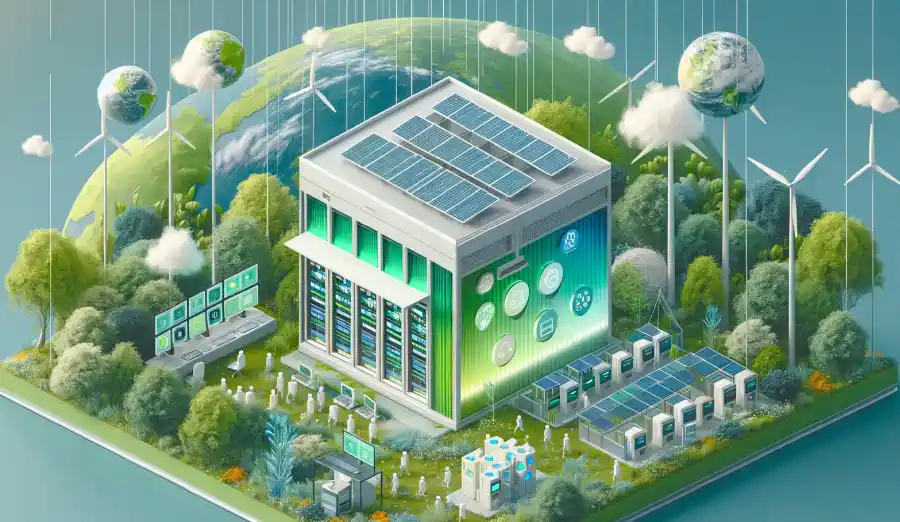Green/climate-friendly local AI
The technological development within artificial intelligence (AI) has opened new doors for businesses all over the world.
Among these advancements is the concept of green, climate-friendly AI, which promises to revolutionize the industry by offering sustainable and environmentally friendly solutions.
Stable Diffusion and other similar local AI technologies play a central role in this development.
What Is Green Climate-Friendly AI?
Green climate-friendly AI refers to the development and application of AI systems with a conscious effort to minimize their carbon footprint and energy consumption.
This includes optimizing algorithms to reduce energy consumption and using renewable energy sources to power data centers.
Climate-Friendly AI: A Path Toward a Greener Future
In a time where digital transformation is accelerating, businesses face the urgent need to implement technologies that not only streamline operations and foster innovation but also support sustainability.
Artificial intelligence (AI) has proven to be a catalyst for such changes, but with growing concerns about its climate impact, the focus is shifting towards the development of climate-friendly AI.
It is well known that advanced AI systems like Gemini, ChatGPT, Dall-E, and Midjourney require significant amounts of data and computing power, resulting in substantial energy use. This energy often comes from data centers powered by fossil fuels, contributing to CO2 emissions and global warming.
For example, training a large language model can consume as much energy as several thousand homes do in a year. This sharpens the focus on the need to find sustainable alternatives that can reduce AI's climate footprint without compromising performance.
Solutions such as Stable Diffusion and other similar local AIs offer a glimpse into the future's potential, where sustainability and technology go hand in hand.
The Full Calculation
It is extremely important to focus on green AI, but it is also important to mention that AI also contributes to making some processes greener
Even though it requires energy to create an image, some images may require less energy to be created with AI compared to traditional methods. This is because one must account for the things that are often needed when using an image - and this can, for example, include:
- Photographer: Who needs to be transported back and forth to locations
- Models: Who need to be transported back and forth to locations
- Other staff: Who need to be transported back and forth to locations
- Editing: Image processing on computers
- Sending files: Files that are sent between servers for approval, etc.
In the same way, one must remember these intermediary calculations when evaluating whether AI is green, so as not to risk refusing to use it in cases where it actually benefits the environment.
I've translated the text while preserving the HTML structure and elements as in the original. Let me know if there's anything else you need help with!
Benefits of Green Climate-Friendly AI for Businesses
- Energy Savings: By implementing green AI solutions, businesses can drastically reduce their energy consumption and costs.
- Improved Prompting: In this way, you can get the correct answer or image the first time and save the environment from unnecessary strain.
- Improved Brand Image: Businesses that actively work to be more sustainable enjoy a stronger brand image and loyalty among consumers.
- Increased Innovation: Green AI encourages innovation as businesses seek new methods to achieve sustainability without compromising performance.

Stable Diffusion and Similar Technologies
Stable Diffusion is an example of a local AI that has the potential to drive green solutions. By using advanced algorithms that require less computing power, Stable Diffusion can deliver impressive results without the significant energy consumption typically associated with heavy AI processing.
Implementing Green AI Solutions
For businesses looking to integrate green AI solutions, the journey starts with evaluating their current technology usage and energy consumption. Next, they should look for AI technologies designed with sustainability in mind, such as Stable Diffusion. Finally, it is important to have a long-term strategy for continuous optimization and maintenance of these systems.
Green Alternatives: The Way Forward
A number of initiatives are underway to make traditional AI like ChatGPT, Gemini, Dall-E, and similar more climate-friendly.
These include optimizing algorithms to reduce energy consumption, using more energy-efficient hardware components, and moving data centers to locations where they can be powered with renewable energy.
For businesses, the transition to greener AI represents an opportunity not just to reduce their environmental impact, but also to stand out as pioneers within sustainable technology development. By investing in and implementing climate-friendly AI solutions, businesses can lead the way and contribute to a more sustainable future.